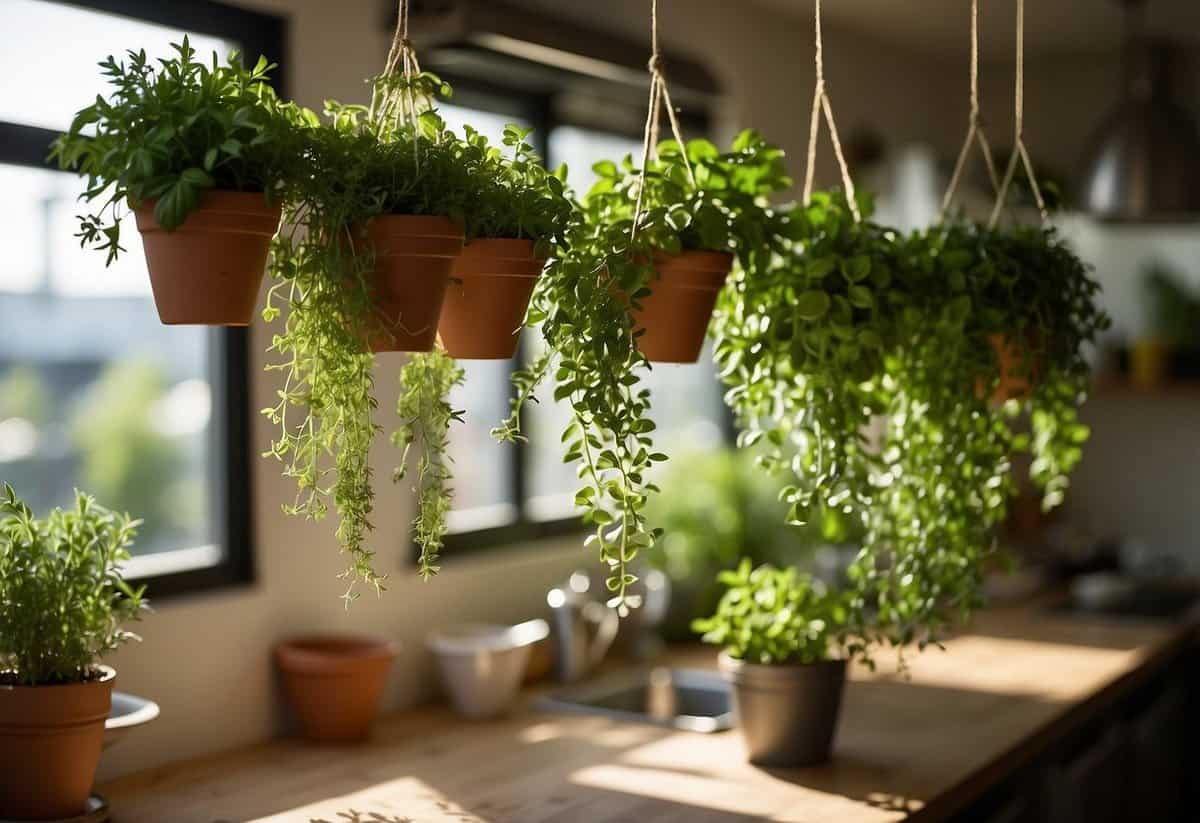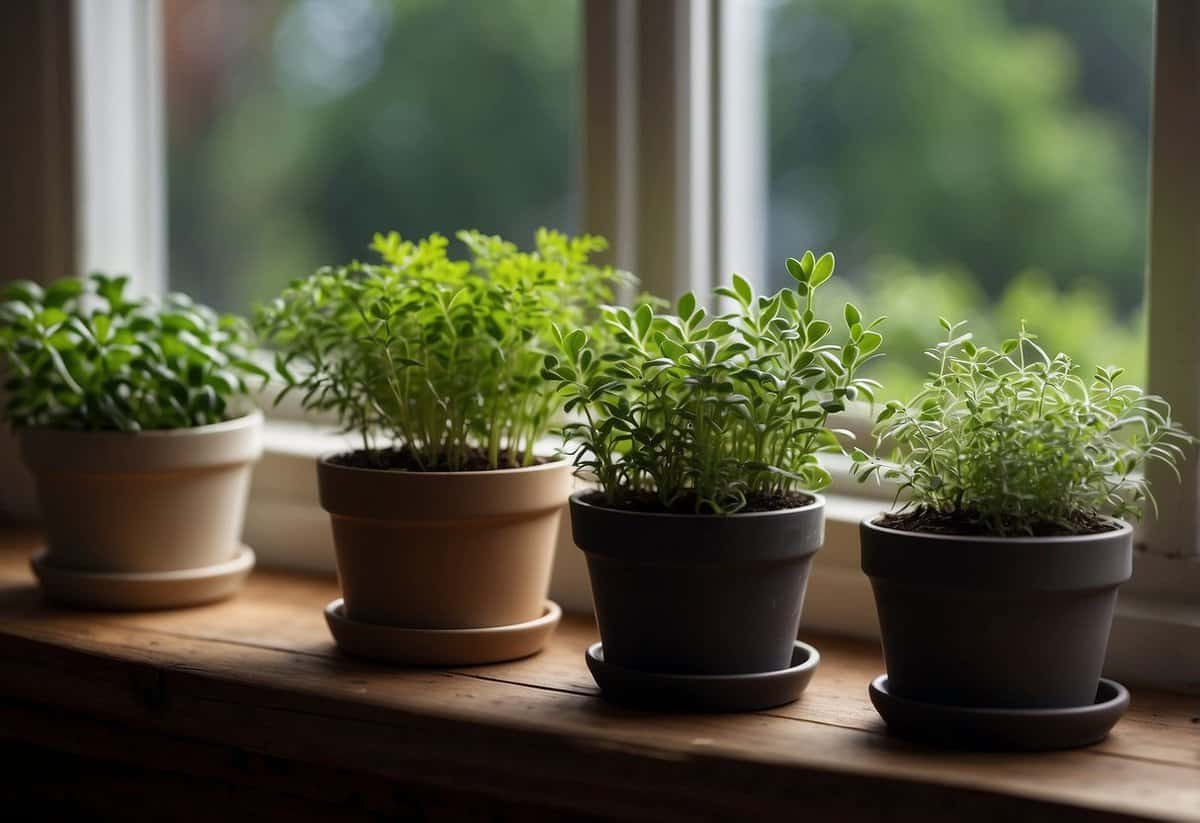Indoor Herb Garden Tips: Grow Fresh Herbs Easily at Home
Growing an indoor herb garden can be a fun and rewarding experience. Bringing fresh herbs into your kitchen lets you add vibrant flavors to your cooking, even during the colder months. Plus, it can be a delightful way to connect with nature right inside your home.

Why not brighten up your living space and enjoy the benefits of fresh herbs at your fingertips? With a little effort and care, you can grow a variety of herbs on your windowsill or with the help of grow lights. This guide will help you get started on your indoor herb gardening journey.
1) Choose the Right Herbs

When starting your indoor herb garden, it’s important to select herbs that thrive indoors. Basil, mint, parsley, rosemary, and thyme are popular choices.
Basil needs lots of sunlight. Place it on a sunny windowsill. Mint is hardy and grows well even in low light.
Parsley and rosemary also do well indoors. Thyme is versatile and easy to care for. Choose herbs that suit your needs and fit well in your indoor space.
2) Ensure Proper Lighting

For your indoor herbs to thrive, they need lots of light. Most herbs like basil, cilantro, and parsley require at least six hours of bright sunlight daily. Place them near a sunny window, preferably south-facing for optimal results.
If natural light is scarce, consider using grow lights. LED lights are a good choice and can be placed about 6 inches above your plants. Remember to keep incandescent lights at least 24 inches away to avoid overheating.
Adjust the height of your lights based on the herbs you’re growing. For herbs that need more light, you can lower the lights accordingly.
3) Use Good Quality Soil

It’s important to use good quality potting soil for your indoor herb garden. The soil needs to be well-draining and rich in nutrients. This helps your herbs grow strong and healthy.
If you worry about overwatering, consider a fast-draining mix. You can also mix in perlite or sand to improve drainage.
Remember, the right soil helps your herbs thrive indoors.
4) Maintain Consistent Watering

Watering indoor herbs correctly is essential. Use a watering can or a small-mouthed jar to irrigate gently. Pour water until it starts running out of the drainage holes in the pot.
Check the soil before watering by touching it with your finger. If it feels wet, wait until it dries slightly. A soil moisture meter can help you know when to water.
5) Prune Regularly

Pruning is key to keeping your indoor herbs healthy and productive. By trimming the tops and removing dead or yellow leaves, you encourage new growth.
Always use sharp, clean scissors or pruners to avoid harming the plant. For best results, start at the top and move down, avoiding the larger leaves at the base. When pruning, be gentle and make precise cuts. Regular trimming helps your herbs grow bushier and stay robust. Pruned plants tend to be more productive, giving you more herbs to enjoy in your cooking.
Remember, pruning isn’t just about looks—it’s about keeping your plants thriving. For more detailed guidance, check out these pruning tips for a larger harvest.
6) Control Humidity Levels

Keeping the right humidity levels is important for your indoor herb garden. Most herbs prefer a humidity level of around 50%.
One easy way to increase humidity is by placing your herb pots on a tray filled with pebbles and water. As the water evaporates, it adds moisture to the air.
Make sure not to overfill the tray. The bottom of the pots should not touch the water, which can cause root rot. Adding a humidifier nearby can also help maintain the right levels. These simple steps can make a big difference in keeping your herbs happy and healthy.
7) Rotate Your Plants

Rotating your plants is key to making sure they grow evenly. When herbs get light from only one side, they can lean in that direction. Turning your pots every few days helps them stand straighter and look better.
If your herbs are near a window, rotate the pots 180 degrees. This way, all sides get enough sunlight and the plants grow more balanced.
8) Use the Right Containers

Choosing the right containers is key to your indoor herb garden’s success.
Select pots with good drainage to prevent waterlogging and root rot.
Opt for well-draining pots or containers with adequate drainage holes like these ones.
Small containers work well for herbs like basil that thrive in indoor environments.
Ensure each container has enough room for roots to grow.
You can also use creative containers like mason jars or repurposed items, as long as there’s proper drainage.
9) Provide Adequate Air Circulation

Proper air circulation is essential for a healthy indoor herb garden. Stagnant air can lead to diseases and pest problems. Make sure there is enough space between your plants to allow air to move freely.
Consider using a small fan to create gentle breezes that mimic outdoor conditions. Periodically open windows to let fresh air in. This helps prevent fungal issues and keeps your herbs thriving. Keeping the air fresh and moving in your indoor garden is key to maintaining healthy herbs.
10) Implement Companion Planting

Companion planting can greatly improve your indoor herb garden. Growing complementary herbs together helps them thrive. For example, parsley grows well with marjoram, oregano, and thyme. This helps enhance growth and reduces pests.
Mix herbs like rosemary, sage, and chives. These combinations create a symbiotic environment. Check moisture regularly and ensure proper sunlight. Planting herbs wisely leads to a flourishing garden.
To learn more, visit Master Indoor Companion Planting for more detailed tips.
Choosing the Right Herbs

Selecting the right herbs is crucial for a thriving indoor herb garden. Consider herbs that adapt well to indoor environments and specific factors like available light and space.
Herbs That Thrive Indoors
Some herbs are better suited for indoor growth. Basil, mint, parsley, rosemary, and thyme are popular choices. These herbs adapt well to indoor conditions and offer great versatility in cooking.
-
Basil prefers bright, indirect light and regular watering.
-
Mint thrives in medium light and moist soil, making it easy to care for.
-
Parsley requires moderate light and consistent moisture to grow well.
-
Rosemary needs bright light and well-drained soil.
-
Thyme grows well in bright light and dry conditions.
These herbs are not only easy to grow indoors but also very useful in the kitchen.
Factors to Consider
When choosing herbs for your indoor garden, consider the amount of light available. Herbs like basil and rosemary need plenty of sunlight, so place them on a sunny windowsill. If natural light is limited, you may need grow lights.
Think about space as well. Some herbs like lemongrass can grow large, so ensure you have enough room.
Watering needs vary too. Herbs like mint prefer consistently moist soil, while rosemary and thyme thrive with less frequent watering.
Temperature and humidity are also important. Herbs generally prefer a stable temperature and moderate humidity. Avoid placing herbs near drafts or heating vents.
By considering these factors, you can select herbs that will thrive in your indoor environment.
Optimal Growing Conditions

To grow healthy herbs indoors, it’s crucial to provide the right conditions, especially regarding light and watering. Ensuring your herbs get adequate light and proper soil moisture will keep them thriving.
Light Requirements
Herbs thrive best with 5-8 hours of direct sunlight per day. Position your herb garden near a south- or southwest-facing window for maximum light exposure. If natural light is not sufficient, use an LED grow light to give your herbs a total of 12-14 hours of light daily.
Check your herbs regularly for signs of inadequate light. If they look leggy and pale, they likely need more light. Investing in a good LED grow light can make a big difference. Hanging the light about 6 inches above the plants is ideal.
Soil and Watering Needs
Use quality, well-draining soil for your indoor herbs. The soil should be light and airy, not heavy or soggy. Water your herbs gently using a small watering can or jar. The key is to keep the soil moist but not waterlogged.
Ensure water is absorbed gradually and does not pool on the surface. Soil that retains too much water can cause root rot and harm your herbs. Check the soil moisture every few days, watering only when the top inch feels dry.
Following these guidelines for light and watering will help your indoor herb garden flourish with healthy, vibrant plants.







